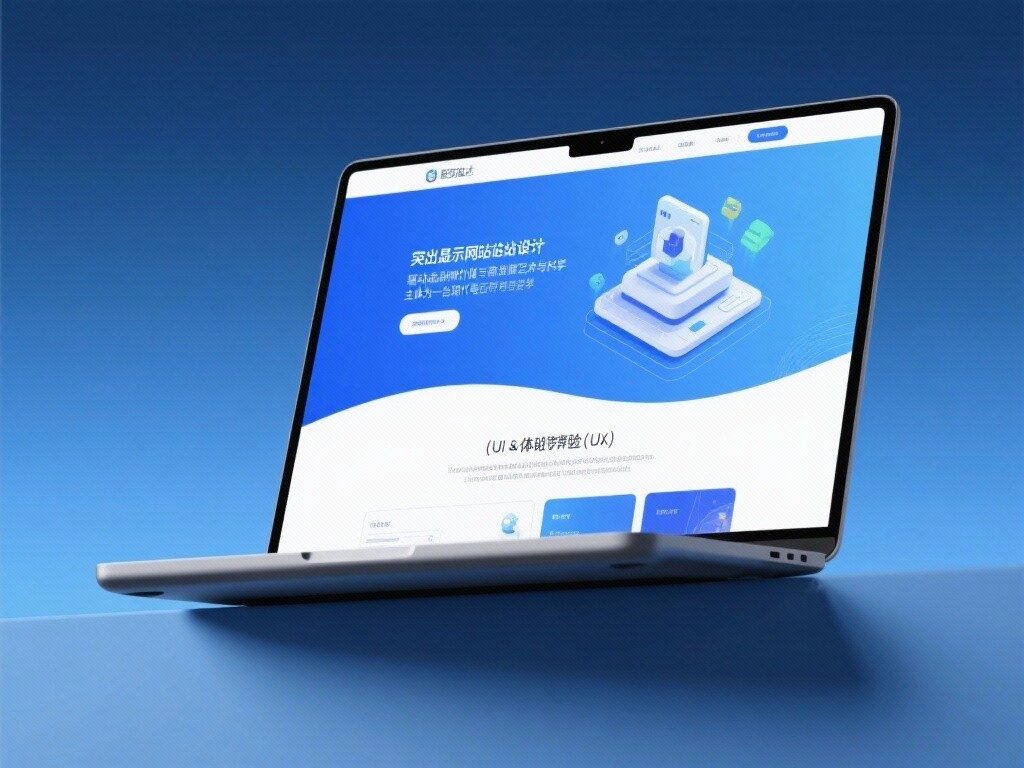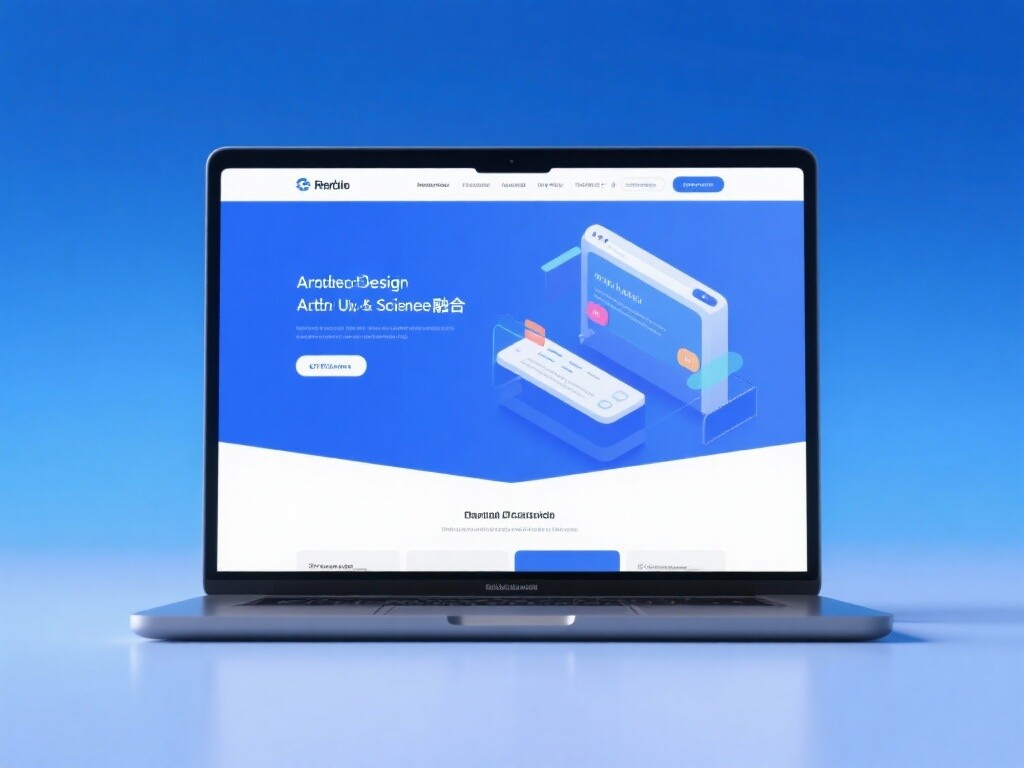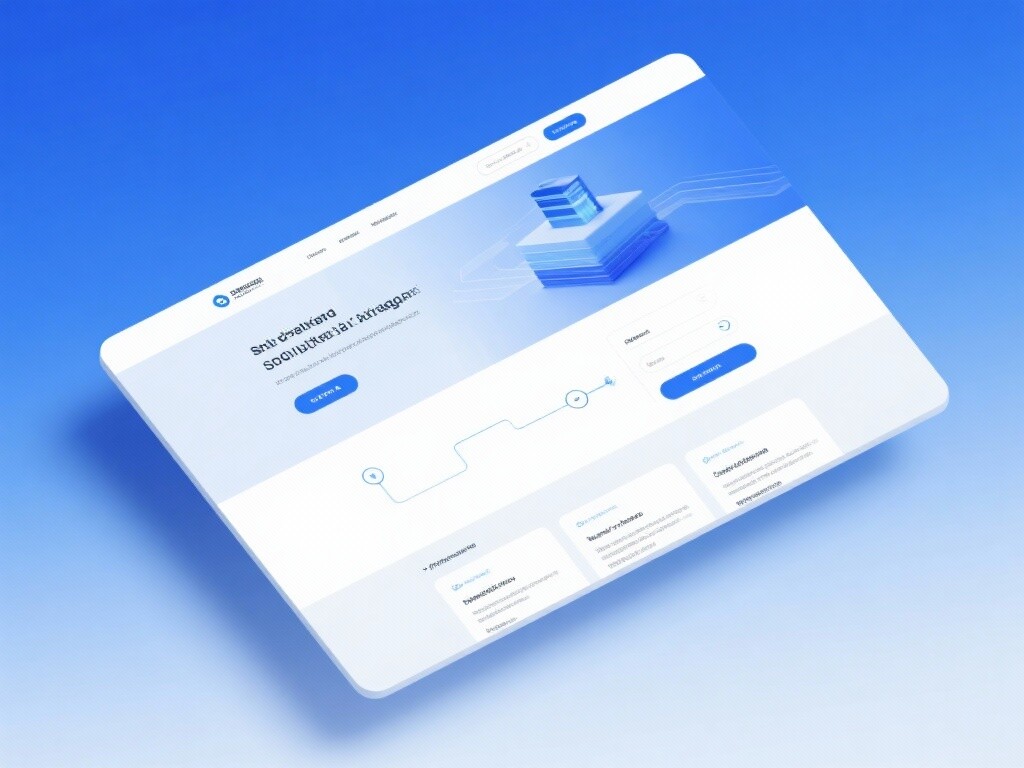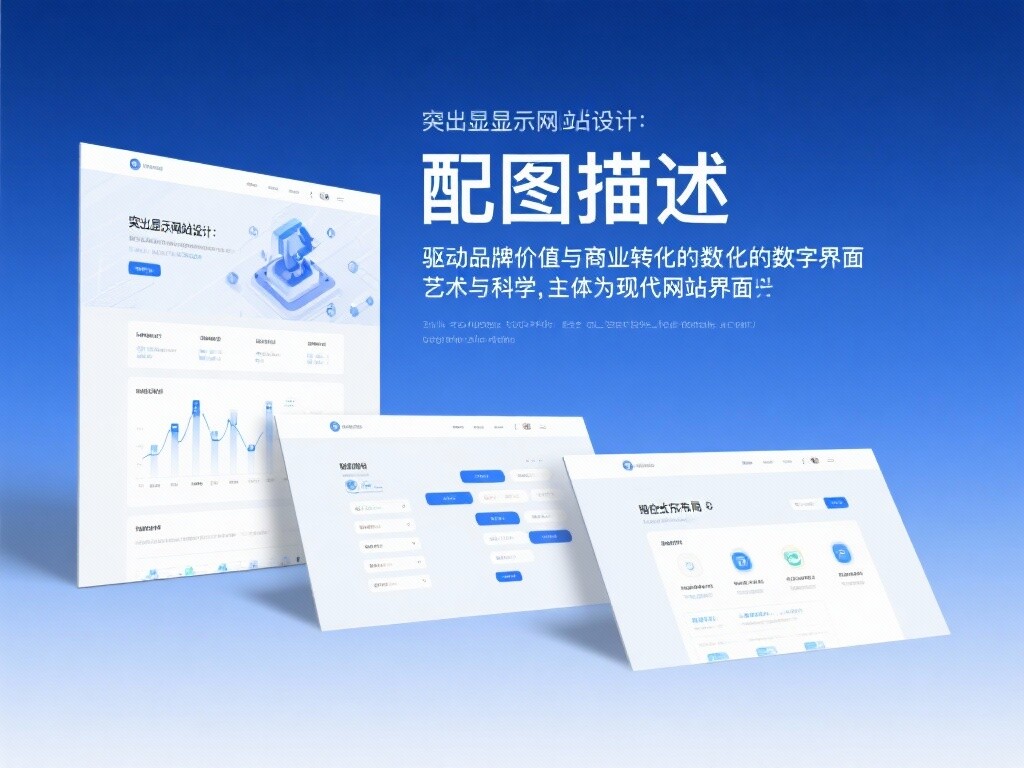Easy Camp Cloud Intelligent Website Construction and Marketing System Platform!
Definition of Website Design: The Fusion of User-Centric Functionality and Aesthetics
Website Design is a multidisciplinary process involving planning, conceptualization, and the arrangement of website content (text, images, videos) through interface (UI), user experience (UX), and overall visual presentation. Its goal is to create a visually appealing, highly functional, easy-to-use digital interface that achieves business objectives.
Three Core Components of Website Design:
User Experience Design (UX Design): Focuses on how users interact with the website. The core principles are usability, accessibility, efficiency, and satisfaction, ensuring users can find the information they need or complete their goals with minimal effort.
User Interface Design (UI Design): Focuses on what users see on the interface. The core principles are visual aesthetics, layout, color schemes, typography, and interactive elements (buttons, icons), ensuring the interface is attractive, consistent, and aligned with brand identity.
Information Architecture (IA): Focuses on the structure and organization of the website. The core principles are navigation, categorization, and hierarchy, ensuring logical clarity so users don’t get lost.
The Strategic Value of Website Design: Reducing cognitive load, building trust, and guiding users toward conversion.
The Evolution of Website Design: From Static Pages to Responsive Interactive Experiences
Website design has evolved alongside internet technology, user devices, and aesthetic trends, transitioning from “information display” to “user interaction”.
1. Early Stage: Static Pages & Table Layouts (1990s-2000s)
Technical Features: Websites were built purely with HTML, featuring static content and using HTML tables for layout.
Design Style: Minimalist, text-heavy, lacking aesthetic considerations. The primary goal was information dissemination.
2. Flash & Web 2.0 Era (2000-2010)
Technical Features: CSS gained traction, separating structure from style. Flash became popular, enabling rich animations and complex interactions.
Design Style: Visually striking but suffered from slow loading, poor SEO, and incompatibility with mobile devices, leading to polarized user experiences.
3. Mobile Revolution & Responsive Design (2010-2017)
Core Technology: Smartphones proliferated, and Google promoted mobile-first design. Responsive Web Design (RWD) became the industry standard.
Design Philosophy: “Content-first” and “simplicity and usability” became mainstream, emphasizing consistency and accessibility across devices.
4. UX/CRO & Performance-Driven Design (2017-Present)
Trend Drivers: User Experience (UX) and Conversion Rate Optimization (CRO) were elevated to strategic importance.
Technical Integration: Design must account for Core Web Vitals and leverage dynamic components, headless CMS for flexible updates.
Intelligent Tools: AI design tools assist designers in color schemes, layouts, and code optimization.
Technical Principles of Website Design: Frontend Stack & User Behavior Analysis
Modern website design relies on efficient frontend technologies and precise user behavior data capture and analysis.
1. The Frontend Stack
Website design is ultimately implemented through frontend code, primarily using:
HTML5 (Structure): Defines content structure and semantic tags.
CSS3 (Styling & Aesthetics): Handles visual styles, layouts, animations, and responsive rules.
JavaScript (Interactivity): Manages dynamic behavior, user interactions, and data processing.
Frameworks/Libraries: Complex designs often rely on React, Vue, Angular for component-based, high-performance rendering.
2. Core Technologies of Responsive Design
Media Queries: A core CSS3 feature that applies different styles based on device screen size, resolution, orientation.
Flexbox & Grid: Modern CSS layout techniques enabling elements to adapt flexibly to screen sizes, key to RWD.
3. Design & SEO Technical Integration
Schema Structured Data: Designers collaborate with developers to embed Schema Markups, helping search engines understand content (e.g., products, reviews, FAQs).
Core Web Vitals: Designers must ensure elements (especially images, fonts) don’t slow down page speed, impacting LCP, INP, and SEO rankings.
4. User Behavior Analysis (Analytics & Heatmaps)
Principle: Tools like Google Analytics, Yandex Metrica, combined with heatmaps and session recordings, analyze user actions (clicks, scrolling, dwell time, exits).
Value: Designers optimize iteratively based on real user data, aligning decisions with business outcomes.
Core Features & Strategic Applications of Website Design
An excellent website design incorporates these five core features to drive business conversions.
1. Conversion-Oriented Design
Features: All design elements (colors, button sizes, layouts) aim to guide users toward specific CTAs.
Applications: Leveraging F-shaped reading patterns, highlighting core CTAs, and minimizing unnecessary clicks.
2. Brand Consistency & Trust
Features: Colors, fonts, and visual styles align with brand logos and VI.
Applications: Using high-resolution, professional visuals and displaying trust signals (customer reviews, partner logos, security certificates) to build credibility.
3. Clear User Paths & Information Architecture
Features: Navigation bars, search functions, and internal links are intuitive and consistent.
Applications: A clear hierarchy (Homepage → Category Page → Product Page) ensures users always know their location and can find information within three clicks.
4. SEO-Friendly Content Layout
Features: Design structures facilitate content optimization, e.g., proper H-tag hierarchy and avoiding SEO content hidden in folds or JavaScript.
Applications: Ensuring pages have ample text space for keyword coverage, not dominated by large images or Flash.
5. Accessibility & Inclusive Design
Features: Designs accommodate all users, including those with disabilities, via sufficient text contrast, image alt text, keyboard navigation.
Advantages: Expands user reach while meeting Google’s accessibility requirements (indirectly boosting SEO).
Advanced Applications & Future Trends in Website Design
Website design is an evolving art, requiring continuous updates based on technological and market changes.
1. Landing Page Optimization
Application: Designing highly focused, single-goal landing pages for paid ads (Meta Ads, Google Ads) or campaigns.
Strategy: Removing main navigation to reduce distractions, highlighting core value propositions, and using contrasting CTA buttons.
2. Micro-Interactions & Dynamic Effects
Application: Subtle animations or hover effects enhance engagement without compromising speed.
Principle: Effects must be meaningful and lightweight, avoiding cognitive overload.
3. Modular Design Systems
Application: For large websites, establishing unified design systems (component libraries, design principles).
Value: Ensures efficiency, consistency, and maintainability, accelerating future iterations.
4. AI-Assisted Design & Personalization
Trend: AI tools analyze user data to dynamically adjust layouts, recommend content, and optimize CTAs, enabling personalized experiences.
Future: Design will become more data-driven and dynamic, adapting to individual visitor needs.
EasyProfit: Your SEO-Driven Website Design Strategy Partner
EasyProfit understands that a visually stunning, highly functional, and SEO-friendly website is the cornerstone of business success. Our design services go beyond superficial aesthetics, focusing on conversion-driven, algorithm-guided strategic deployment.
SEO/UX Integrated Design: Our workflow starts with user intent and keyword structures, ensuring designs naturally align with SEO best practices without sacrificing performance.
Core Web Vitals Performance: We rigorously optimize images, animations, and code during design to meet performance metrics, laying a solid foundation for high SEO rankings.
Conversion Rate Optimization (CRO): Based on heatmaps and user path analysis, we scientifically A/B test and iterate on CTAs, forms, and information architecture, turning visitors into customers.
Information Architecture Restructuring: We help plan your website’s content hierarchy, internal linking, and navigation, ensuring both crawlers and users efficiently access key pages.
Brand Digital Upgrade: We ensure your design not only follows the latest industry trends but also clearly and consistently communicates professionalism and trust.
Choose EasyProfit to transform your website design into a high-value, high-efficiency, high-conversion engine for business growth.
FAQ
1. In website design, which is more important: aesthetics or functionality?
Functionality (usability/UX) is far more important than pure aesthetics.
User goals: Users visit websites to complete a task (purchase, find information, contact). If the design is overly flashy but hard to use or slow to load, users will leave immediately.
The role of aesthetics: Aesthetic design can build trust and brand professionalism. It is a value-add to functionality but cannot replace usability.
Conclusion: Usability is the foundation, while aesthetics are a means to enhance the user experience.
2. How does responsive web design (RWD) affect SEO rankings?
The impact is significant—it is a mandatory requirement for modern SEO.
Mobile-first indexing: Google defaults to ranking content and structure based on the mobile version of a website. If your site performs poorly on mobile devices (e.g., text too small, buttons too close), rankings will suffer.
Core Web Vitals: Mobile loading speed and layout stability are key components of Core Web Vitals, directly affecting user experience scores and SEO rankings.
3. What is conversion rate optimization (CRO), and how can website design achieve it?
CRO is the process of increasing the percentage of website visitors who become customers (purchases, inquiries). Website design achieves CRO through the following methods:
Highlight CTAs: Strategically place and design high-contrast, clear call-to-action buttons.
Reduce friction: Simplify form length, minimize click steps, and use progress bars.
Build trust: Clearly display customer reviews, security badges, and refund policies around key conversion points.
Clear value proposition: Ensure users understand how your product or service solves their problem within 3 seconds.
4. Does website design "code quality" affect SEO?
Yes, code quality directly impacts technical SEO.
Impact on speed: Redundant, bloated JavaScript and CSS code will slow down website loading, directly lowering Core Web Vitals scores.
Impact on crawling: Incorrect HTML semantics (e.g., overusing div tags instead of H tags) or relying on JavaScript-rendered critical content may prevent search engine crawlers from correctly understanding page structure and content, affecting indexing.

Customer Reviews
Mr. Yang, CMO of a SaaS software company
"Our previous website design was very 'eye-catching,' but conversion rates remained low. The EasyWin team conducted a comprehensive SEO/UX audit for us and found our navigation too complex, with unclear CTA buttons. They redesigned our information architecture and landing pages, strictly adhering to Core Web Vitals standards to optimize performance. As a result, while maintaining professional aesthetics, our website saw a 45% increase in inquiry conversions, and SEO rankings for core business keywords steadily rose, proving that SEO-driven design is true commercial design."
Ms. Zhao, founder of a luxury travel service platform
"For high-end brands, design is trust. EasyWin's designers not only gave our website exceptional visual quality and brand consistency but, more crucially, designed an intuitive user journey. Using heatmap analysis, they optimized the layout of product display pages, allowing customers to quickly find highlights and booking buttons for travel packages. Now, our website is not just an industry-recognized design benchmark but also sees significantly reduced bounce rates and increased customer dwell time, greatly enhancing the brand's authority and professionalism in the minds of target clients."





